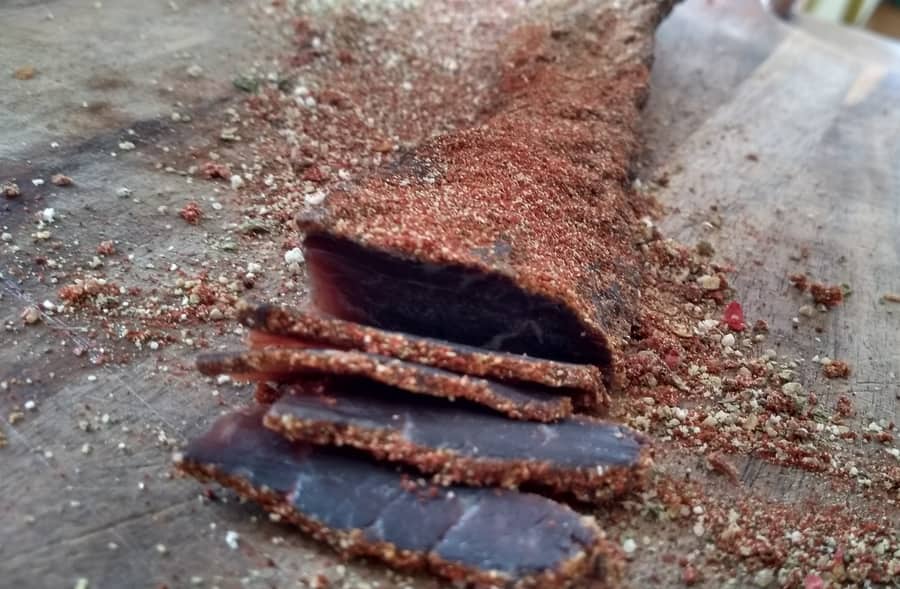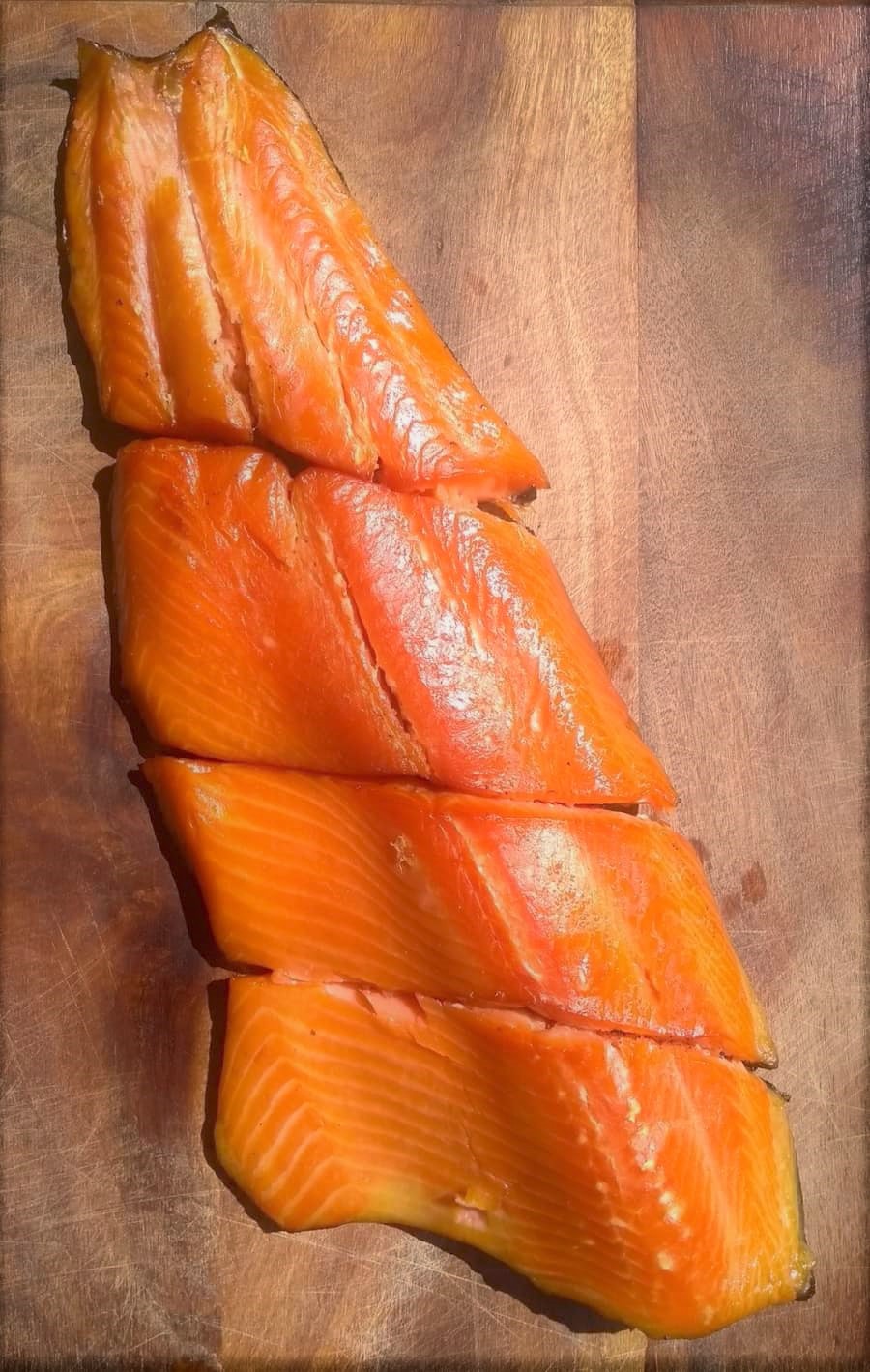When I first started exploring the ketogenic lifestyle, I noticed how naturally it intersected with my long-time passion for curing meat. Both are rooted in simplicity—good ingredients, patience, and letting nature do part of the work.
But there’s often confusion around whether cured meats actually “fit” a keto diet, so I wanted to share how I see it from years of making and eating them.
This isn’t a medical or dietary guide—it’s an explanation based on first-hand experience with curing and enjoying meats that happen to line up well with keto principles.
By the end, you’ll see which cured meats suit low-carb eating and which to avoid if you’re staying strict on macros.

What Makes Cured Meat Fit the Keto Diet
Keto is essentially a metabolic shift. By keeping carbohydrates very low, the body starts using fat as its main fuel source. Most cured meats—particularly whole-muscle styles like prosciutto or bresaola—are naturally aligned with that because they contain almost zero carbohydrates. They’re made from solid meat, salt, and spices; nothing more is required.
Where confusion creeps in is with processed or commercial versions. Some manufacturers add sugar, starches, or fillers to change flavor, texture, or yield. Those additives can quickly bump up carb counts. That’s why I always emphasize reading ingredient labels—or better yet, curing your own meat, where you know exactly what’s inside.
For me, the keto compatibility of cured meat comes down to two things: the absence of carbohydrates and the presence of natural fats. Fat content varies widely between cuts—lean beef bresaola differs from fatty pancetta—but both are keto-compatible because the process doesn’t rely on sugar. The curing environment—temperature, humidity, and time—does the work, not sweeteners or fillers.
That’s also why traditional European charcuterie fits so neatly with modern keto eating. Long before anyone tracked macros, Italians and Spaniards were drying, salting, and aging meats for preservation and flavor, ending up with high-protein, moderate-to-high-fat foods and virtually no carbs. In that sense, keto eaters have been enjoying “keto-friendly” meats for centuries without realizing it.
Of course, not every cured meat is created equal. The ones made with passion and minimal ingredients tend to line up with keto naturally, while mass-produced products often drift away from that ideal.
Types of Cured Meats That Are Keto-Approved
In my curing chamber or smoker, I’ve experimented with everything from beef and venison bresaola to traditional pork cuts like coppa and pancetta. All of them stay well within keto macros because no sugar or starch enters the process. Here’s how I categorize them before we dive deeper:
- Dry-cured whole-muscle meats – prosciutto, coppa, lonza, bresaola.
- Air-dried or lightly smoked snacks – biltong, jerky (without sugar marinades).
- Traditional smoked items – hot-smoked bacon or cold-smoked fish prepared without sweet glaze.
Each of these follows the same guiding rule: meat, salt, and time. Nothing in that trio interferes with ketosis.
When I talk about keto-friendly cured meats, I mean the ones that stay true to their traditional craft. These are cured with salt and patience, not shortcuts. I’ve made or eaten hundreds of variations, and the pattern is always the same—the simpler the ingredients, the more likely it fits perfectly within a ketogenic diet.
Dry-Cured Whole Muscle Meats
Classic Italian-style dry-cured meats like prosciutto, coppa, pancetta, and bresaola are some of the purest examples. These are made from a single cut of meat that’s salted and hung to age slowly. The result is dense, savory protein and healthy fat with zero carbohydrates.
I’ve made dry-cured beef bresaola and pork coppa countless times, both using just salt, spices, and controlled humidity. They contain no sugar, no starch, and nothing that would knock you out of ketosis. Even when you buy them, reputable producers rarely include added carbs—just check the label for anything ending in “ose” (like dextrose or glucose), which would indicate sugar.

Air-Dried and Smoked Meats
Jerky and biltong are two more examples that work well for keto. I make both at home with simple seasoning—usually salt, malt vinegar, coriander, and black pepper. The key is avoiding marinades or store-bought sauces that include sugar or molasses. When made cleanly, these meats provide sustained energy and travel well without refrigeration.
Cold-smoked and hot-smoked meats can also be keto-compatible. The method doesn’t change the nutritional profile; only added ingredients do. My cold-smoked salmon or chicken, for example, gets a light salt cure before being smoked at low temperatures for flavor—not for preservation with sugar. If you’re interested in doing your own, this guide explains how to dry cure meat safely at home.
When Cured Meats Are Not Keto-Friendly
The problem starts when cured meat becomes industrial. Once curing shifts from preservation and flavor to shelf life and profit, extra ingredients appear—fillers, sugars, starches, and artificial flavor enhancers. These aren’t part of traditional charcuterie, but they’re common in mass-produced deli meats. I break down the difference in more detail in this article on processed vs dry-cured meat.
Fillers and Sugars
Many cheap deli slices or supermarket sausages include breadcrumbs, rice flour, or even corn syrup solids. These boost volume and sweetness but also add carbohydrates. I always look for short ingredient lists—ideally just meat, salt, and spices.
Even jerky can be misleading. A quick glance at nutrition panels reveals that some brands contain 8–10 grams of sugar per 100 grams, turning what should be a keto-friendly snack into something closer to candy. The traditional South African approach to biltong, on the other hand, uses vinegar and spice instead of sugar for preservation and flavor.
Highly Processed Meats
I don’t put spam, hot dogs, or luncheon meat in the same category as cured meats made with care. They may be “cured” in a technical sense, but they’re loaded with stabilizers and fillers that don’t belong in keto or any natural eating approach. Artisan salumi, by contrast, relies on salt and fermentation, not additives. You can see how traditional curing differs by learning how to cure meat in a regular fridge—a simple, honest method.
Cured Meat, Nitrates & Nutrition Context
Nitrates and nitrites are often misunderstood, especially when people lump them together with additives used in heavily processed foods. In reality, they’re natural compounds that appear in far more than cured meat. Leafy greens like spinach, celery, and lettuce contain many times the nitrate content found in salami or prosciutto. This research summary on cured meat and nitrates covers what science says in detail.
When I first started curing meat, I learned that nitrite and nitrate salts serve a few key purposes. They prevent the growth of harmful bacteria like Clostridium botulinum, give cured pork its rosy color, and help stabilize flavor during long drying or smoking periods. The amount used is tiny—regulated closely for food safety—and nearly all of it breaks down over time in the finished product.
In commercial food production, nitrate and nitrite use is carefully controlled by law. In my own curing, I often choose between using a small amount of curing salt or none at all, depending on the style and duration. For quick projects like bacon, I sometimes include curing salt for color and safety; for long, dry cures like bresaola, I rely purely on salt, airflow, and patience. Both approaches produce cured meats that sit comfortably within a keto framework, since neither introduces carbohydrates.
Scientific research continues to clarify that the main dietary source of nitrates isn’t meat—it’s vegetables. For reference, this NCBI review outlines nitrate levels across food groups and supports how moderate cured meat consumption fits within normal dietary limits.
Incorporating Cured Meat into a Keto Lifestyle
When you eat a ketogenic diet, cured meats offer convenience and variety. They don’t need to be cooked, they travel well, and they deliver high-quality protein and fat without carbohydrates. The trick is choosing the right kind of product or, better still, making your own so you control the salt and fat levels. Here’s a detailed guide on temperature and humidity for curing chambers if you want to take that next step.

Balancing Protein and Fat
Cured meats differ widely in fat content. Leaner cuts like bresaola are pure protein, while fatty ones such as pancetta, lardo, or speck bring more energy-dense fat to the table. In keto terms, both are valuable; the key is matching them to your daily macros. A few thin slices of fatty prosciutto can provide the same satiety as a larger serving of lean cured beef.
I also find it useful to combine cured meats with keto-friendly sides that bring balance—things like olives, cheese, or pickled vegetables. These not only complement the salt and richness but also add healthy fats and a bit of acidity to cut through the intensity. Eating cured meat this way feels closer to how traditional Mediterranean cultures enjoy it—simple, moderate, and full of flavor. For more context, see Healthline’s overview of the ketogenic diet.
My Own Approach
Over time, I’ve adapted my curing and eating habits to fit both flavor and lifestyle. When I make salami or dry-cured beef, I always use clean meat from trusted sources and stay close to traditional salt ratios. I avoid sugar entirely and focus on slow drying under controlled humidity. The finished meat fits right into a ketogenic framework because it’s pure protein and fat—nothing else added.
Eating this way isn’t about strict dieting for me—it’s about simplicity. I enjoy knowing that every slice of cured meat I make or choose is crafted the same way it’s been done for generations, and it happens to align perfectly with a low-carb way of eating.
Expert Tip: Choosing Quality Keto Cured Meats
Whenever I’m helping friends or readers pick out cured meats for a keto lifestyle, I tell them to look for two things: simplicity and transparency. If a product lists more than a handful of ingredients, it’s probably not traditional. Real cured meat needs salt, sometimes curing salt, and time. Everything else—especially sugar, starch, or flavor enhancers—is a shortcut.
Good producers proudly show how their meats are made. You can usually see marbling, a natural color, and a label that reads like a recipe rather than a chemistry set. Imported Italian or Spanish cured meats often meet this standard, and small artisan makers closer to home are doing the same. Supporting them not only gives you cleaner food but also keeps old food traditions alive.
For anyone starting to make their own keto-friendly cured meats, I recommend beginning with a simple project like bresaola or dry-cured bacon. You’ll understand exactly what goes into your food and taste how natural the process can be without sugar or preservatives. Once you see the result hanging in your fridge, you’ll never look at supermarket deli meat the same way again.
Alternatives & Serving Ideas
Not every meal needs to revolve around cured pork or beef. Smoked or salt-cured fish such as salmon and mackerel also fit the keto framework. These add variety and omega-3 fats that balance heavier meats. I often mix thinly sliced prosciutto with smoked salmon or trout on the same board—it gives contrast in flavor, fat, and texture.
If you want a plant-based element that pairs well with cured meats, lightly pickled vegetables or fermented sides work beautifully. They add acidity and crunch, cutting through the fat while keeping the meal low in carbohydrates. Simple touches like mustard, olives, or a drizzle of olive oil make everything more balanced and digestible.
When eaten thoughtfully, cured meats become part of a balanced keto lifestyle, not just a salty indulgence. They store well, taste rich, and offer a connection to old-world food culture that fits neatly into modern dietary goals.
Is all cured meat keto-friendly?
No. Traditional dry-cured meats like prosciutto, pancetta, and bresaola contain almost zero carbohydrates, but mass-produced deli meats may include sugars or fillers. Always read labels and look for products made only with meat, salt, and spices.
Are nitrates in cured meat bad for keto?
Nitrates and nitrites don’t affect ketosis. They’re mainly used for food safety and color development. Most nitrates you eat actually come from vegetables, not meat, and regulated amounts in curing are well within safe limits.
Can I make my own keto-friendly cured meat?
Yes. Simple dry-cured meats like bresaola or bacon are easy to make at home. Use clean cuts of meat, the right salt ratio, and proper airflow. Avoid sugar or commercial seasonings and you’ll have a pure keto product.
What is the best cured meat for keto beginners?
Bresaola, prosciutto, and dry-cured bacon are great starting points. They’re simple, widely available, and have predictable salt and fat levels. Choose products from reputable or artisanal sources for the best quality.
If you’ve been eating keto and have your own favorite cured meats or combinations, share them in the comments below—I’m always curious to hear what others are experimenting with.

Tom Mueller
For decades, immersed in studying, working, learning, and teaching the craft of meat curing, sharing the passion and showcasing the world of charcuterie and smoked meat. Read More
